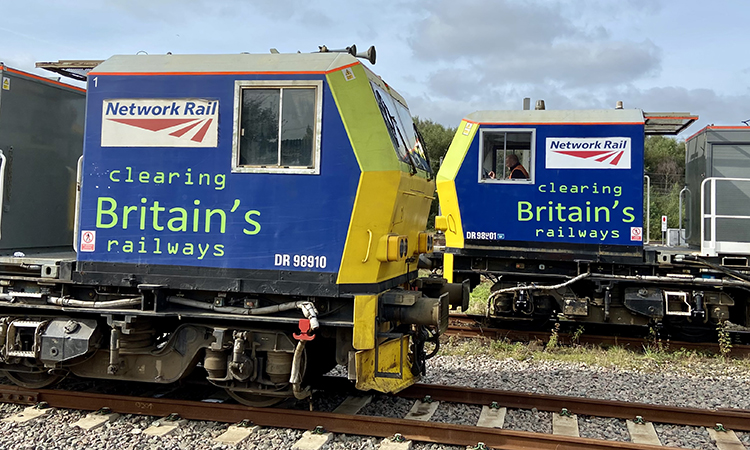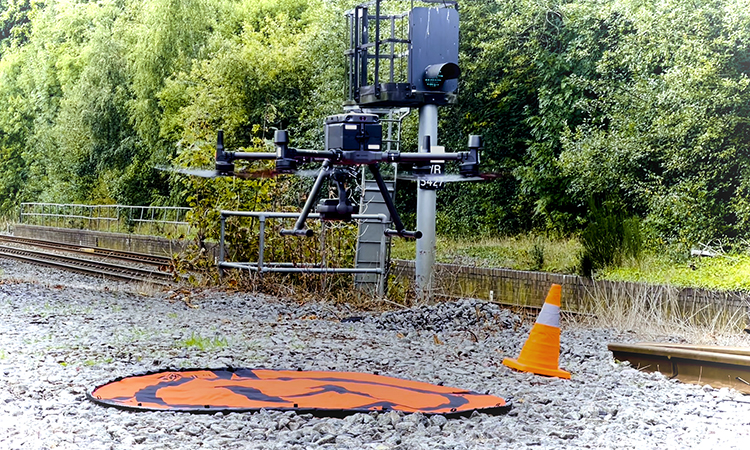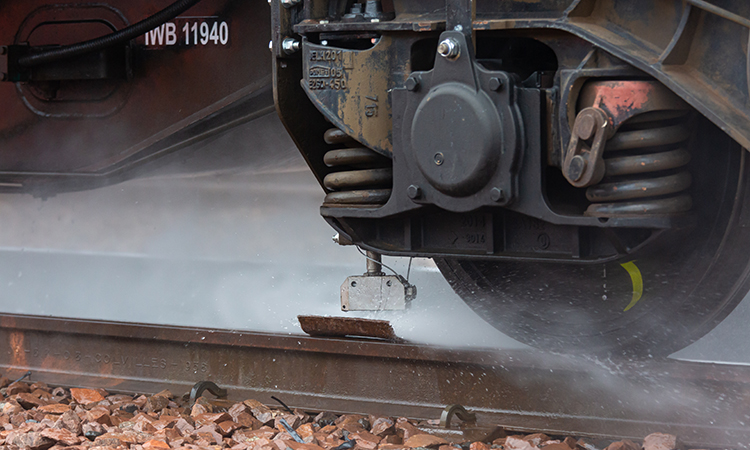Fleet of specialist trains and drones to keep UK rail routes clear of leaves in Autumn
Posted: 4 October 2022 | Elliot Robinson (Editorial Assistant - Global Railway Review) | No comments yet
Aerial drones and specialist trains will be used to wash leaf debris from UK main lines during the Autumn.


Credit: Network Rail
A special fleet of ‘leaf-busting’ trains have started blasting leaves off the line to help keep passengers and freight moving across UK main lines this autumn. Until mid-December, five specialist trains will wash leaf debris from tracks across the UK while trees are shedding their leaves. Aerial drones are also being used for the first time to check known hotspots where leaf fall can cause the worst disruption.
The seasonal delivery depots will be the nerve centre for keeping tracks in the different regions clear for passengers this autumn. Trains known as MPVs (multi-purpose vehicles) and trains called RHTTs (rail head treatment trains) will be in operation. The total miles of track treated over this time will be equivalent to going almost three and a half times around the equator. After railway lines have been cleared with high pressure water jets, the machines then apply rails with a glue-like coating to help passenger and freight train wheels grip the tracks.
Regarded as the railway’s equivalent of black ice on the roads, leaves on the line can create issues when they stick to damp rails and are compressed by moving trains into a thin, black layer which can affect train braking and acceleration. The build-up of leaf mulch can also make it harder for signallers to detect a train’s location, causing delays. After railway lines have been cleared with high pressure water jets, the machines then apply rails with a sand-like gel to help passenger and freight train wheels grip the tracks.


Credit: Network Rail
Related news you will enjoy:
Network Rail completes Cambrian Line extreme weather resilience project
Network Rail completes improvements at key Elizabeth line station
“We are working hard as an industry to clear leaves from the line and to keep disruption to a minimum during the autumn period,” Rob Cummings, Seasonal Improvement Manager at Northern, said. “We have introduced special timetables on problematic routes to give our customers a more reliable service and our drivers also have advanced training to help develop techniques which further reduce the impact of slippery rails. We are also helping to develop new innovative technology that will reduce the impact of leaves on the line.”
“Autumn conditions including wet weather combined with leaves on the line can create challenging conditions which can result in disruption and delays for our customers,” Jerry Farquharson, Service Planning Director at TransPennine Express, said. “Our modern trains are all fitted with devices that spray sand on to the tracks to provide extra grip but despite this, sometimes our drivers need to adapt the way they drive and slow down. We continue to work closely with our industry partners including Network Rail to keep customers moving and recommend that anyone travelling checks their journey prior to travelling.”


Water jetting in action – Credit: Network Rail
“Leaves on the line are a big problem for the railway, it disrupts services and inconveniences passengers, and every year, Network Rail and train operators work together to battle against the elements to get passengers and freight to their destinations,” Martin Colmey, Operations Director for Network Rail’s Central route, said. “We are ready to keep people and goods moving across the West Midlands and Chiltern Main line running a safe and reliable service for our customers.”
Last year, Network Rail spent £4.7million in the West Midlands and £5 million on the North West route during its autumn efforts to keep passengers moving. This year, traction gel applicators have been positioned across the routes rail networks. They spray a special sand-like gel onto the rails to help provide extra grip for train wheels. Specialist teams will be positioned across the regions to check that the autumn treatment programme is working effectively and provide additional support where necessary.
Footage of a drone being used to check hotspots for leaves can be found below.
Related topics
Adverse Weather, Cargo, Freight & Heavy-Haul, Drones, High-Speed Rail, Safety, Track/Infrastructure Maintenance & Engineering







